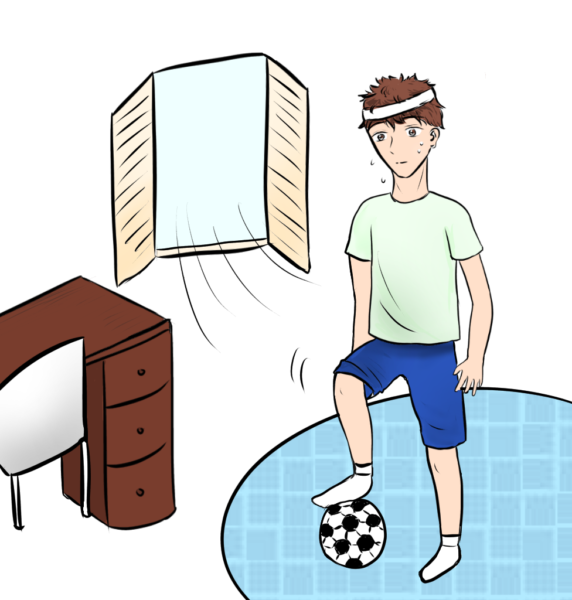
Written by Colin Johnson and Emma Quanbeck.

With the coronavirus still rampant in the U.S., college sports and the college recruitment process are going to look a little different this year. From optional on-campus training to new recruiting apps, athletes are going to have to adapt more than they ever have before.
Some colleges are having games with fewer fans than usual while practicing social distancing, like Texas A&M University, while schools in the Ivy League announced that fall sports are being cancelled all together.
The Big Ten Conference, which includes teams such as the University of Michigan, Michigan State and Ohio State, has decided to postpone athletics, leaving players disappointed.
“Our position with the Big Ten to everybody has been, we want to play as soon as we possibly can, and we’re ready to play,” said University of Michigan coach Harbaugh to the Detroit News. “We could be ready to play a game in two weeks. Just get the pads on. Our guys have trained without a pause since June 15. That’s our position. We’re ready to play as soon as we possibly can play.”
On the other hand, some colleges aren’t requiring athletes to come onto campus at all for training.
“Right now, moving on campus is optional,” said Aragon class of 2020 alumna Lydia Manu who was recruited to play basketball for Fresno Pacific University. “Our team is not required to move on campus yet because we are not allowed to host official practices at the school. The dates of competition are still up in the air due to COVID-19 and so it is difficult to plan ahead.”
“Our team is not required to move on campus yet because we are not allowed to host official practices at the school”
Despite the range of circumstances among colleges, athletes are still training on their own and adapting to the new situations.
“[To train at home], I’ve been running from the house to the beach every day in the morning and then doing a lot of sprints, and just a lot of cardio there,” said Aragon class of 2020 alumna Shannon Galleano who was recruited to play softball for California State University San Bernardino.
However, there is still the question of how athletes in high school will be recruited this year. Especially since there are currently no high school competitions going on, recruitment will rely heavily on an athlete’s online presence. Recruiting apps such as Next College Student Athlete, BeRecruited and DraftCard help student-athletes and coaches communicate with each other by allowing athletes to post stats, videos and statements for coaches to see.
Under normal circumstances, prospective college athletes would go through a series of different periods in their recruiting journey. The first period is the contact period where coaches have face-to-face meetings with student-athletes, write letters, make phone calls, watch competitions and visit high schools. Next, during the evaluation period, coaches can do everything as in a contact period, but they cannot have face-to-face contact with a student-athlete. In the quiet period, coaches cannot scout off-campus. In the dead period, coaches cannot have any contact other than mail or phone calls. The order of these phases depends on the year and is different between divisions.
“Keep in contact with the schools you are interested in and stay in shape and [be] prepared,” said Aragon athletic director Steve Sell. “I would submit workouts that display work ethic, speed and strength.”
Scholarships are also largely undecided right now. Without opportunities to watch athletes play, it will be hard to choose who deserves a scholarship out of the large pool of athletes that want one. In addition, many athletes have decided to take an off year, also called redshirting, in order to get an extra year of eligibility once colleges open up again. As a result, rosters are going to be overflowing with players since these redshirts don’t count towards the roster limit. The packed rosters will force colleges to cut some players, likely less skilled freshmen, off the team and refer them to junior colleges even after they have committed to the team.
“It is unclear how many scholarships will be available with more college athletes redshirting,” Sell said. “What has stayed the same is that colleges are still desperate to get top athletes to commit.”
“What has stayed the same is that colleges are still desperate to get top athletes to commit”
For now, student-athletes in high schools and colleges alike are navigating these unprecedented times, eager for sports to return back to a normal schedule.



